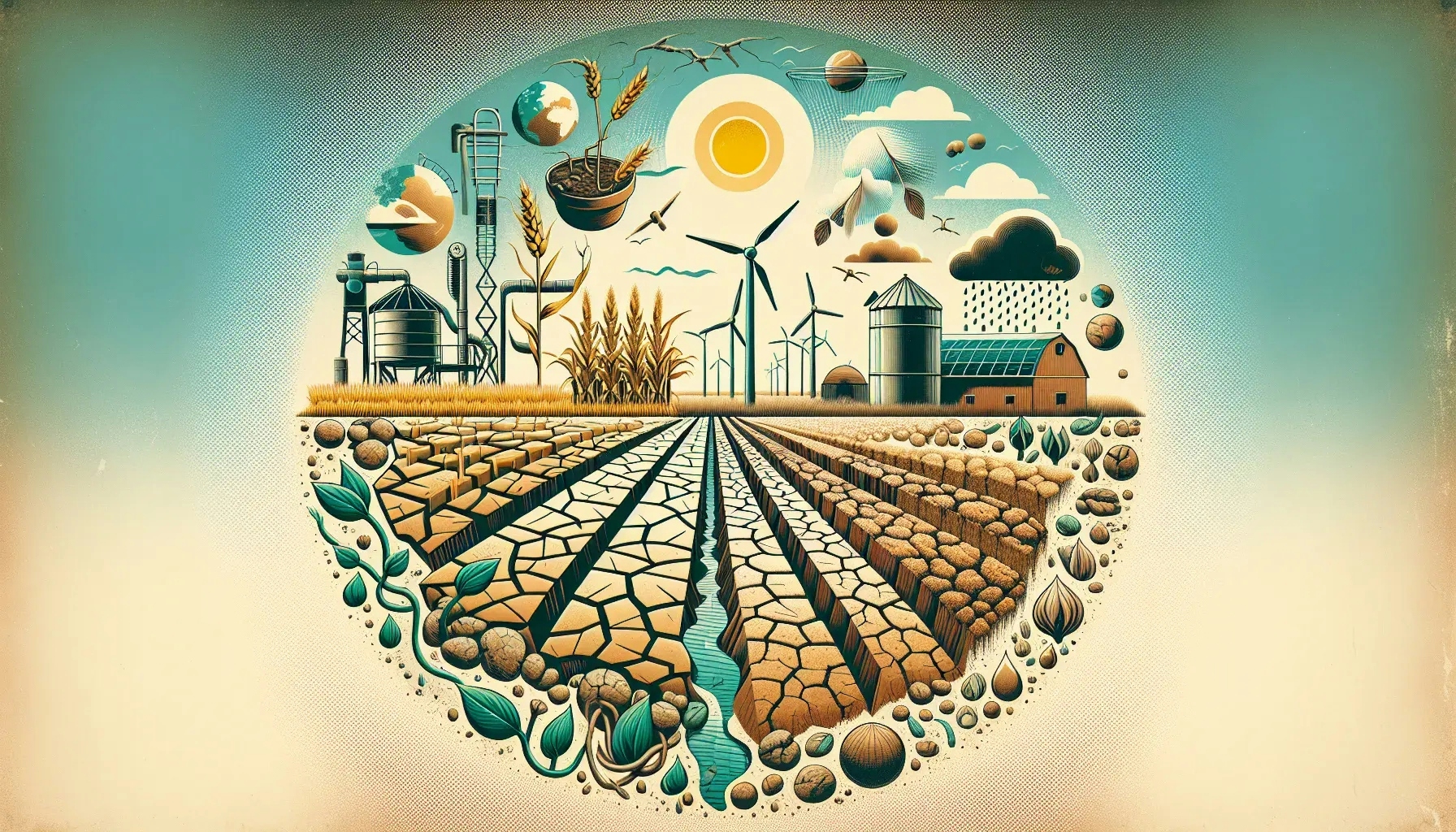Agronomic Strategies for Drought-Prone Regions
Agronomy Magazine

Drought is a formidable foe for farmers worldwide. It's a phenomenon that can decimate crops, deplete water supplies, and disrupt livelihoods. This blog post explores agronomic strategies that can help farmers in drought-prone regions to mitigate the impacts of water scarcity. We'll delve into soil management techniques, crop selection, irrigation strategies, and more. Let's embark on this journey of discovery together.
Understanding Drought and Its Impact on Agriculture
Drought is a natural disaster that occurs when a region receives significantly less rainfall than average over an extended period. It can lead to severe water shortages, affecting agriculture, ecosystems, and human populations.
Agriculture is particularly vulnerable to drought. Water is a critical resource for crop growth, and its scarcity can lead to reduced yields or complete crop failure. Drought can also degrade soil quality, making it less productive in the long term.
Understanding the impact of drought on agriculture is the first step towards developing effective agronomic strategies for drought-prone regions. By recognizing the challenges, we can devise solutions that are tailored to the specific needs and conditions of these areas.
Soil Management Techniques for Drought Conditions
Soil management plays a crucial role in mitigating the effects of drought. Healthy, well-managed soil can retain more water, reducing the need for irrigation and helping crops withstand periods of water scarcity.
One effective soil management technique is the use of cover crops. These plants, grown in the off-season, can improve soil health by adding organic matter, preventing erosion, and improving water retention.
Another strategy is conservation tillage. This method involves leaving crop residue on the fields after harvest, which can help to reduce evaporation, improve soil structure, and increase water infiltration.
Choosing the Right Crops for Drought-Prone Areas
Crop selection is another critical factor in managing drought. Some crops are more drought-resistant than others, meaning they can survive and even thrive with less water.
For example, millets and sorghum are both highly drought-resistant crops. They have deep root systems that allow them to access water from deeper in the soil, and they can survive in conditions that would be challenging for other crops.
Another strategy is to grow a variety of crops. This approach, known as crop diversification, can help to spread risk and ensure some level of production, even in a drought year.
Efficient Irrigation Strategies
Irrigation is a vital tool for managing water in agriculture, especially in drought-prone regions. However, it's essential to use water efficiently to avoid wastage.
Drip irrigation is one method that can significantly improve water efficiency. It delivers water directly to the root zone of plants, reducing evaporation and runoff.
Another strategy is deficit irrigation, where water is applied in amounts less than the full water requirement of the crop. This method can help to conserve water while still maintaining reasonable yields.
The Role of Technology in Drought Management
Technology can play a significant role in managing drought. For example, remote sensing technologies can provide real-time data on soil moisture levels, helping farmers make informed decisions about irrigation.
Precision agriculture, which involves using technology to manage crops at a very detailed level, can also be beneficial. It can help farmers apply water, fertilizers, and other inputs more efficiently, reducing waste and improving yields.
Policy and Community Support for Drought Management
While individual farmers can do a lot to manage drought, broader policy and community support are also crucial. Governments can provide subsidies for drought-resistant crops or efficient irrigation systems, for example.
Communities can also play a role by sharing knowledge and resources. Farmer cooperatives, for instance, can pool resources to invest in shared irrigation systems or to purchase drought-resistant seeds.
Embracing Agronomic Strategies for Drought Resilience
Drought is a significant challenge for agriculture, particularly in regions prone to this natural disaster. However, by embracing effective agronomic strategies, farmers can mitigate the impacts of drought and ensure the sustainability of their operations. From soil management and crop selection to efficient irrigation and the use of technology, there are many tools at our disposal. With the right support and resources, we can build a more resilient agricultural sector that can withstand the challenges of drought.